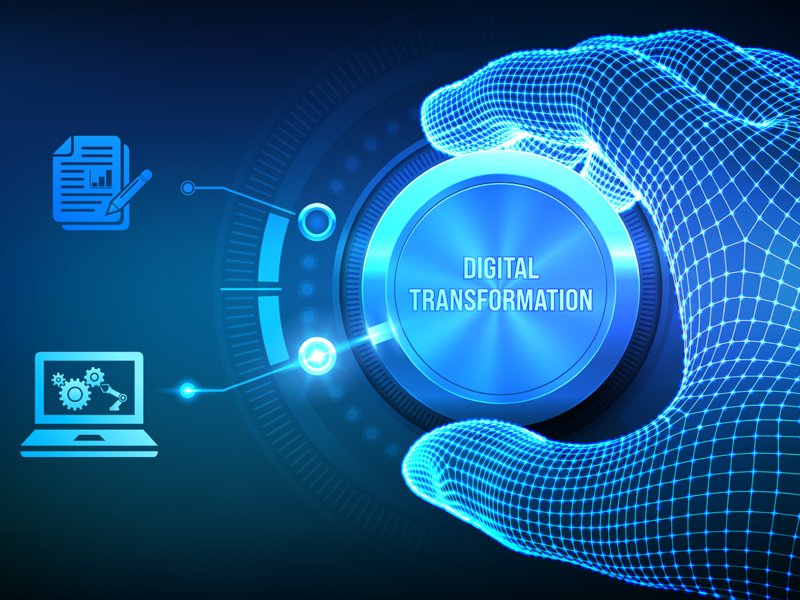The Top Business Trends to Watch in 2025: Emerging Opportunities and Strategies for Growth
The business world is constantly evolving, and staying ahead of emerging trends is essential for companies that want to remain competitive. As we move into 2025, several key trends are reshaping the global business landscape, from the rise of digital technologies to shifting consumer expectations. In this article, we’ll explore the top business trends that are expected to dominate in the coming year and offer insights on how companies can adapt and thrive.
1. Remote and Hybrid Work Models Are Here to Stay
The COVID-19 pandemic accelerated the global shift toward remote work, and now, even as the world moves past the crisis, many companies are choosing to maintain hybrid or fully remote work structures. According to a recent study, over 70% of businesses plan to adopt some form of hybrid model by 2025.
Hybrid work models allow employees to split their time between the office and remote locations, offering flexibility and work-life balance. For businesses, this trend offers several advantages:
- Cost Savings: Companies can reduce overhead costs related to office space, utilities, and other facilities.
- Access to a Global Talent Pool: Remote work allows businesses to hire talent from anywhere in the world, diversifying the workforce and tapping into new markets.
- Increased Productivity: Many employees report being more productive when working remotely, as they can design their work environments to suit their needs.
For businesses looking to implement or optimize remote work strategies, investing in digital collaboration tools like Slack, Zoom, and project management software (e.g., Asana or Trello) is crucial for maintaining productivity and communication.
2. Sustainability and Green Business Practices Take Center Stage
As climate change concerns continue to grow, sustainability has become a major priority for businesses worldwide. By 2025, companies are expected to be more transparent about their environmental impact and to integrate sustainability into their business models. In fact, research suggests that businesses that prioritize sustainability are more likely to attract loyal customers and gain a competitive edge.
Sustainable practices can be implemented across various areas of business, including:
- Energy Efficiency: Companies are adopting renewable energy sources, such as solar power, to reduce their carbon footprints and lower energy costs.
- Sustainable Supply Chains: Businesses are increasingly working with suppliers who use eco-friendly materials and adhere to ethical practices.
- Product Lifecycle Management: From manufacturing to packaging, businesses are designing products with sustainability in mind. This includes reducing waste and offering recyclable or reusable packaging options.
For businesses, sustainability is no longer a “nice-to-have” but a necessity. Not only do sustainable practices benefit the environment, but they also boost brand image, appeal to socially-conscious consumers, and often lead to cost savings in the long run.
3. Artificial Intelligence (AI) and Automation Are Transforming Operations
Artificial Intelligence and automation technologies are making their mark across virtually every sector. In 2025, businesses are expected to leverage AI to enhance customer service, streamline operations, and improve decision-making. AI-driven tools are being used to automate repetitive tasks, allowing employees to focus on higher-level activities that require creativity and problem-solving skills.
Key areas where AI is expected to drive change include:
- Customer Service: Chatbots and virtual assistants are helping businesses provide 24/7 customer support. These AI-powered tools can handle simple inquiries, allowing human agents to focus on more complex issues.
- Data Analytics: AI tools can analyze massive datasets to uncover patterns and insights that inform business decisions. For example, AI can predict customer behavior, helping businesses optimize marketing campaigns and inventory management.
- Supply Chain Optimization: AI and machine learning algorithms can improve inventory forecasting, reduce costs, and enhance logistics efficiency by predicting demand patterns.
For companies looking to embrace AI and automation, it’s important to invest in the right tools and technologies that align with their goals, whether it’s improving customer satisfaction or optimizing operational efficiency.
4. E-Commerce and Digital Transformation Continue to Rise
E-commerce is one of the fastest-growing sectors globally, and this trend is only expected to accelerate in 2025. In fact, global e-commerce sales are forecasted to exceed $7 trillion by 2025, driven by the increasing shift toward online shopping.
Businesses across various industries are transitioning to digital platforms to meet the growing demand for online products and services. Some key areas driving the growth of e-commerce include:
- Social Commerce: Social media platforms like Instagram, Facebook, and TikTok are becoming essential for businesses to reach and engage with customers. With features like Instagram Shopping and Facebook Marketplace, businesses can sell directly through social platforms.
- Mobile Commerce (M-Commerce): As mobile devices become more advanced, consumers are increasingly using their smartphones to shop online. Mobile-optimized websites and apps are essential for businesses to capture this market.
- Omnichannel Shopping: Consumers expect a seamless shopping experience across multiple channels. Businesses are integrating online stores with physical locations to offer click-and-collect services, personalized experiences, and consistent brand messaging across touchpoints.
For businesses, embracing digital transformation is crucial. Companies that adapt to the evolving landscape of e-commerce can expand their reach, improve customer experiences, and stay competitive in an increasingly digital world.
5. The Rise of the Gig Economy and Freelance Work
The gig economy has been steadily growing over the past few years, and by 2025, it is expected that nearly 50% of the workforce will be engaged in some form of freelance or gig work. Many individuals are choosing freelance work for its flexibility, and businesses are taking advantage of the gig economy to access specialized talent on-demand.
Some key drivers of the gig economy include:
- Digital Platforms: Websites like Upwork, Fiverr, and Freelancer make it easier for businesses to find freelance talent across various sectors, from design and marketing to programming and customer support.
- Flexible Workforce: Businesses are increasingly relying on gig workers for short-term projects, allowing them to scale their workforce without committing to long-term employment contracts.
- Cost-Effective Solutions: Hiring freelancers can be more cost-effective for businesses, as they don’t have to worry about providing benefits, office space, or long-term salaries.
Companies that embrace the gig economy can tap into a diverse talent pool and stay agile in an ever-changing business environment. However, businesses must also be aware of the challenges that come with managing a flexible workforce, such as legal considerations and maintaining consistent quality across freelance projects.
6. Consumer-Centric Marketing Strategies
As consumer behavior continues to evolve, businesses must adapt their marketing strategies to focus on delivering personalized experiences. In 2025, data-driven, customer-centric marketing will be more important than ever, with companies using advanced analytics and AI to deliver tailored content, offers, and experiences to their target audience.
Key strategies for consumer-centric marketing include:
- Personalized Content: Using customer data, businesses can create targeted content that speaks directly to individual preferences and behaviors.
- Customer Journey Mapping: Understanding the various touchpoints in the customer journey helps businesses create cohesive, tailored experiences across all channels.
- Influencer Marketing: Partnering with influencers who resonate with your target audience allows businesses to build trust and credibility while reaching new customers.
In an era where consumers are constantly bombarded with ads and marketing messages, creating personalized, relevant experiences is the key to building lasting customer relationships.
Conclusion
The business world in 2025 is characterized by rapid technological advances, changing work models, and an increasing focus on sustainability. Companies that embrace these trends, such as hybrid work models, AI-driven innovation, e-commerce expansion, and consumer-centric marketing, will be better positioned for success in the future.
By staying informed about these trends and adopting strategies that align with the changing business landscape, businesses can not only thrive but also lead the way in their respective industries. Whether it’s through embracing sustainability, investing in AI, or optimizing customer experiences, the future of business is full of exciting opportunities.













